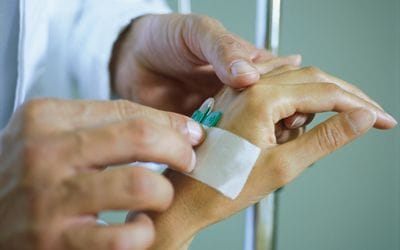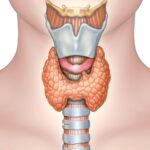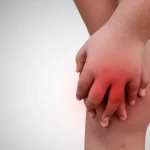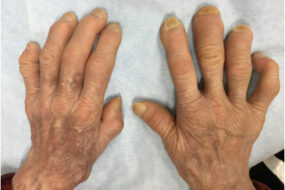- Home
- INTERNAL MEDICINE
- Kawasaki Disease

Kawasaki disease is a rare but serious pediatric condition that involves inflammation of the blood vessels (vasculitis), particularly affecting the coronary arteries. It primarily occurs in children under the age of 5 but can also affect older children and even infants.
The exact cause of Kawasaki disease is not fully understood, but it is thought to involve an abnormal immune response to infection or environmental factors in genetically susceptible individuals.
Key Features:
- Fever: Persistent high fever lasting at least 5 days, often unresponsive to antipyretics.
- Rash: A widespread rash that can vary in appearance.
- Conjunctivitis: Redness in both eyes without discharge.
- Oral changes: Cracked, red lips, a “strawberry” tongue, and redness in the mouth and throat.
- Swollen lymph nodes: Usually one large swollen lymph node on the neck.
- Swelling or redness in the hands and feet: Often leading to peeling skin later in the course of the disease.
Diagnosis:
- Diagnosis is clinical, based on the symptoms listed above. No single test can definitively diagnose Kawasaki disease, but blood tests, echocardiograms, and other imaging studies may be used to assess inflammation and potential damage to the heart.
Complications:
- Coronary artery aneurysms: The most serious complication, which can lead to long-term cardiovascular problems.
- Myocarditis, arrhythmias, and valvular dysfunction: These can occur due to inflammation of the heart.
Treatment
1. Initial Treatment (Acute Phase)
- Intravenous Immunoglobulin (IVIG):
- A high dose (2g/kg) is given once, usually within the first 10 days of illness, and has been shown to reduce the risk of coronary artery aneurysms.
- Mechanism: IVIG helps modulate the immune response, thereby reducing inflammation.
- Aspirin (Acetylsalicylic acid):
- High-dose aspirin (30-50 mg/kg/day) is started in the acute phase to reduce fever and inflammation.
- After the fever resolves, the dose is reduced to a lower “anti-thrombotic” dose (3-5 mg/kg/day) to prevent blood clots (thrombosis) due to endothelial damage.
- Aspirin is continued until there’s no evidence of coronary artery involvement, which can last 6-8 weeks or longer, depending on the patient’s coronary status.

2. Management of Refractory Kawasaki Disease
- If the fever and inflammation persist after the first IVIG infusion (about 10-20% of cases), the following options may be considered:
- Second dose of IVIG: A second IVIG infusion may be administered.
- Corticosteroids:
- Corticosteroids like prednisone or methylprednisolone can be added to reduce inflammation, especially in high-risk patients or those unresponsive to IVIG.
- Infliximab: A monoclonal antibody against tumor necrosis factor (TNF)-α can be used if the disease remains resistant to IVIG and corticosteroids.
3. Long-Term Management and Follow-up
- Echocardiography: Serial echocardiograms are performed to monitor for coronary artery aneurysms, valvular heart disease, and myocarditis.
- Baseline echocardiogram during the acute phase, followed by additional scans at 2-6 weeks and 6-8 weeks post-treatment.
- If coronary artery abnormalities are detected, more frequent monitoring may be required.
- Antiplatelet Therapy (Aspirin): If coronary artery aneurysms are present or persist, long-term low-dose aspirin is recommended.
- In cases of large aneurysms, dual antiplatelet therapy (e.g., aspirin + clopidogrel) or anticoagulation with warfarin may be required.
- Statins: For some children with severe coronary involvement, statins may be prescribed to reduce cardiovascular risks.
4. Management of Coronary Artery Aneurysms
- Small or medium aneurysms: Patients may remain on low-dose aspirin for months or years, depending on the resolution of the aneurysm.
- Large or giant aneurysms: These patients are at a higher risk for thrombosis and myocardial infarction, so they may require:
- Anticoagulation (e.g., warfarin or heparin).
- Beta-blockers or calcium channel blockers to manage coronary artery flow.
- Long-term monitoring with stress tests, cardiac MRI, or CT angiography.
- In severe cases, interventional procedures such as percutaneous coronary intervention (PCI) or coronary artery bypass grafting (CABG) may be needed.
5. Other Supportive Management
- Hydration and nutrition: Supportive care with fluids, fever management, and maintaining proper nutrition is important during the acute phase.
- Monitoring for complications: Vigilance for complications like myocarditis, arrhythmias, and valvular dysfunction is essential. Supportive care in an ICU setting may be required for severe cases.
- Avoiding live vaccines: Since IVIG can interfere with the immune response, live vaccines (e.g., MMR, varicella) should be delayed for 11 months after IVIG therapy.
Prognosis:
Children with coronary artery aneurysms require lifelong monitoring and may have an increased risk of cardiovascular complications as they age.
With timely treatment, especially with IVIG within the first 10 days, the majority of children recover without lasting heart problems.












